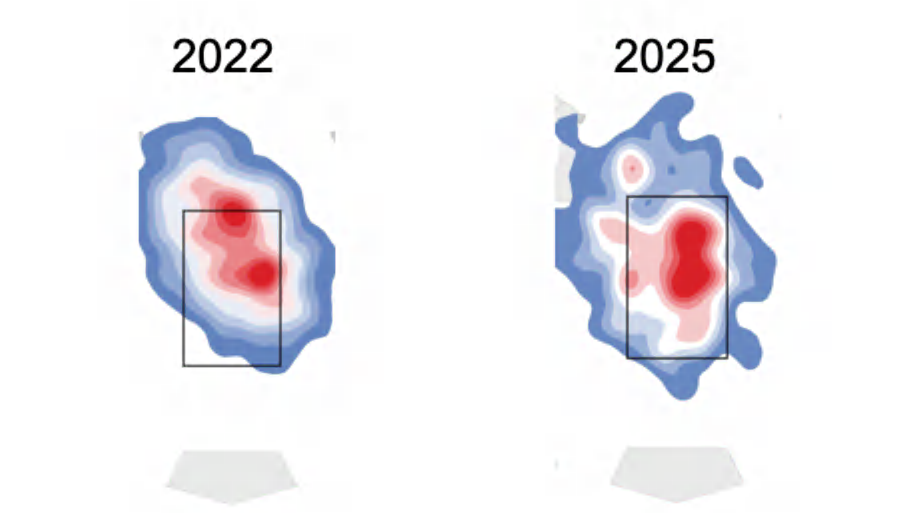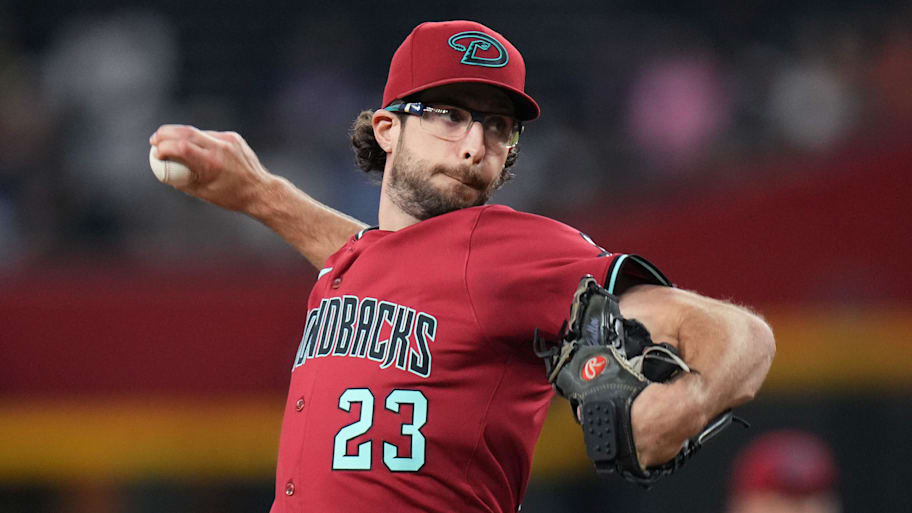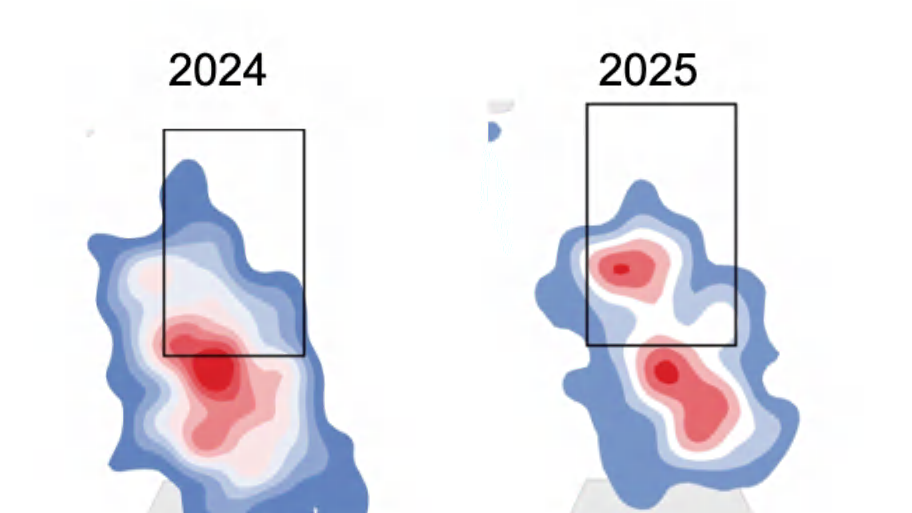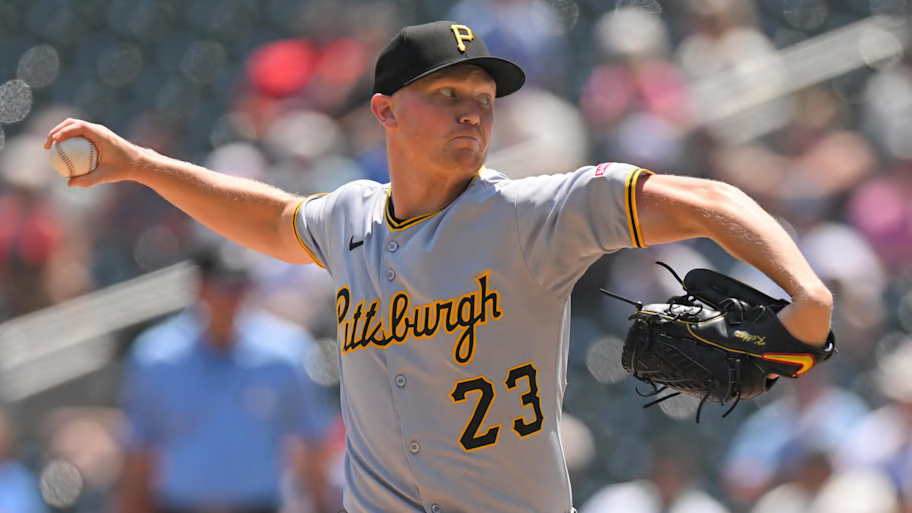Just about every contending team will have added a bullpen arm before the 6 p.m. ET trade deadline hits Thursday. Baseball, especially October baseball, is increasingly about bullpenning. Want to know how much differently postseason baseball is played from just a decade ago? Here you go:
The scarcity of starting pitchers who can win a postseason game, not just manage it by facing 18 batters or fewer, is what makes the deadline so fascinating. Swing-and-miss relievers are easy to find. Trading for an impact starter is much harder.
Last season, 11 starting pitchers were traded in the week before the deadline. Only four of them started a postseason game: Alex Cobb, Zach Eflin, Jack Flaherty and Frankie Montas. They combined for nine starts, with their teams going 4–5 in those games. Flaherty was a difference-maker for the world champion Dodgers. They went 3–2 when Flaherty started.
Many teams are looking for the next Flaherty, most likely the Cubs, Yankees, Mets, Red Sox, Astros and Blue Jays. I’ll give them some help in the search.
Below you will find the top starting pitchers most likely to be traded. I include whether the likely price of acquisition is worth the trade and what the acquiring team needs to do to make the deal work on a short-term basis.
Seth Lugo is off the board after signing an extension with Kansas City. I don’t believe it’s likely the Twins will trade Joe Ryan, or the Nationals will trade MacKenzie Gore. I am looking only at pitchers likely to start one of the first three games of a playoff series, so while Charlie Morton of the Orioles, Andrew Heaney of the Pirates and Adrian Houser of the White Sox are likely to get moved, I don’t put them in the top tier. Happy shopping.
MORE: MLB Trade Candidate Rankings and Deadline Predictions
Sandy Alcantara, Miami Marlins
Worth it? No.
The Fixes
1. Get the four-seam fastball higher
Alcantara throws his four-seamer about as often as the sinker. The four-seamer is a much bigger problem, especially when compared to his last full season. Like Spencer Strider, another post-surgery power pitcher, he doesn’t have that A+ top-rail heater yet. And when you miss slightly lower in the zone, those heaters get hit.

2. Get in the zone more
Alcantara is throwing his fewest strikes since 2020 and allows a career-worst .975 OPS when he falls behind.
3. Learn to hold runners
Basestealers are 24-for-24 against Alcantara this year and 65-for-72 over his past three seasons. That’s a problem that’s not going to be fixed within two months.
The bottom line: Alcantara threw a gem his last time out (no earned runs in seven innings vs. San Diego) with his best four-seam velocity of the year, so it’s tempting. But he’s been inconsistent with the lowest strikeout rate and highest hard-hit rate of his career. Maybe he is just turning a corner. The problem with a trade for Alcantara is you must pay at an ace valuation for him even though he is not yet back at that level. Miami is in no hurry to trade him.
Edward Cabrera, Miami Marlins
Worth it? Yes.
The Fixes
1. Drop him into a pennant race and see how he does
Cabrera has elite spin on two breaking pitches, a changeup he throws to both sided hitters and two fastballs in the 96–97 mph range. He is 27 years old with no worries about innings limits. He has thrown 95 innings this year (including two minor league starts after a spring training blister problem), well short of his season high of 128.
2. Don’t ask too much of him
Like a lot of young pitchers, Cabrera is learning on the major league level how to pitch three times around a lineup. His OPS by times through a lineup: .691 first time, .615 second and .858 the third.
And don’t shorten his rest. The Marlins asked him three times to pitch on the fifth day. The result: 0–2 with a 5.06 ERA.
3. Emphasize getting ahead
He has cut his walk rate, but his strike percentage (62.9%) remains below average. He has so many weapons he can dominate if he controls count leverage more.
The bottom line: Cabrera missed two months last year with a shoulder impingement, which is not a surprise considering his high three-quarters release that requires head tilt to get his arm up and through. He has since lowered his release point and arm angle a bit, which appears to create less stress on his shoulder. With four more years of control, he is a great target for a team willing to make a challenge trade in exchange for a controllable position player, such as Jarren Duran of the Red Sox or Mark Vientos or Ronny Mauricio of the Mets.
Zac Gallen, Arizona Diamondbacks

Worth it? Yes.
The Fixes
1. Lose the cutter
Gallen has more than doubled his cutter use this season, to 7%. It has not worked out well. He throws it to righthanded and lefthanded hitters and too often leaves it glove side and neither low nor high enough, which means it finds barrels. Batters are hitting .405 and slugging .811 against the pitch. Only Jackson Rutledge and Jameson Taillon have higher slugs against a cutter thrown at least 125 times.
2. Tighten the knuckle curveball, especially with runners on
Gallen’s problems this year are almost entirely due to mistakes with runners on. There’s nothing wrong with Bases Empty Gallen:
But look what happens when Gallen pitches out of the stretch—each 2025 mark below qualifies as his career worst, and only Alcantara and Antonio Senzatela of the Rockies have worse opponents’ OPS this year (minimum 200 batters faced) with runners on.
What’s going on here? His release point doesn’t change. His velocity doesn’t change. He does throw more knuckle curveballs this year with runners on (31%) than he did last year (26%). And mistakes with those pitchers are killing him. Gallen is throwing too many strike-to-strike curves in key spots when he used to be a master at getting hitters to chase his strike-to-ball curves. The heat map and stats of his curves with runners on plainly tell the story:

The bottom line: Overall, Gallen’s curveball has dropped from a +15 run value pitch last year to a -4 run value this year. Somebody will have an ace on their hands if they simply get Gallen’s curveball close to where it has been throughout his career, especially out of the stretch. It’s worth the bet.
Dylan Cease, San Diego Padres
Worth it? Unlikely.
The Fix
1. Tinker with his pitch mix
Cease throws 46.2% sliders, the most by far of any starter in MLB. Next is Jacob deGrom of the Rangers at 38.6%. Cease throws hard and has great spin, but Cease has a 4.79 ERA because, like Gallen, he is making mistakes at critical times. He allows a .209 average with the bases empty but a .295 mark with runners on and .301 in high leverage spots.
The bottom line: Cease can be inconsistent, but he has the stuff to dominate a postseason game. A Cease trade is all about a likely high cost more than his talent. He is eligible for free agency after this season. The Padres don’t need to trade him, but they would consider it if the haul were enough to improve their 2026 team and it would be clearly better than the talent from a compensation draft pick.
Mitch Keller, Pittsburgh Pirates
Worth it? Yes.
The Fix
1. Get him some runs
‘The Pirates have scored two runs or less in 14 of his 21 starts. Keller is pitching just as well as Kevin Gausman of the Toronto Blue Jays—only with much less run support.
The bottom line: Keller is throwing well (3–0, 2.03 ERA in his past five starts), he can pitch on the fifth day (he’s done it eight times), he takes the ball deep into games (16 starts of six innings or more) and he’s signed through 2028. Best of all? He proved his toughness. When the Pirates scored two runs or fewer for him in nine straight starts, Keller kept grinding and pitching well without complaint.
Merrill Kelly, Arizona Diamondbacks
Worth it? Yes.
The Fix
1. Just put this veteran in a pennant race and let him respond
Kelly posted a 2.83 ERA in his final 10 starts for Arizona in 2023, postseason included. He is a consummate pitch-maker who can beat lineups three times through by mixing his six pitches. His changeup and cutter are elite.
A team would be getting Kelly at the right time. He is allowing the lowest batting average of his career (.206) and is on a hot streak (1.82 ERA in his past four starts). He turns 37 in October, which may sound risky, but he has clean mechanics and is not a max-effort pitcher.
The bottom line: Kelly is the Jack Flaherty of this deadline: a worry-free rental without a huge cost. He is battle-tested and plug-and-play.
More MLB on Sports Illustrated
This article was originally published on www.si.com as Analyzing Which Starters on the Trade Market Can Swing a World Series.
